Dieser Western-Song aus dem Jahr 1934 bekam für japanische Männer, Frauen und Kinder von 1942 bis 1945 eine besondere Bedeutung. Nach der Bombardierung von Pearl Harbor Anfang Dezember 1941 durch die Japaner wurden Japanisch-amerikanische Staatsbürger und ansässige japanische Ausländer ab Februar 1942 in zehn auf die USA verteilte sog. Relocation Camps gebracht. Sie mussten ihre Häuser und alles verlassen, um in diesen Camps hinter Stacheldrahtzaun zu leben. In den Camps gab es Schulen, es wurden japanische Gärten angelegt und Manzanar hatte in diesen Jahren sogar das modernste Krankenhaus im Owens Valley. In der Manzanar National Historic Site, wo bis zu ca. 11.00 Menschen lebten, wurden einige wenige der Gebäude wieder aufgebaut, um an diese Zeit zu erinnern. Kommt auf Erkundungstour mit mir.
English Summary
“Don’t fence me in”
This western song from 1934 got a special meaning for Japanese men, women and children from 1942 to 1945. After the bombing of Pearl Harbor by the Japanese in early December 1941, Japanese-American citizens and resident Japanese foreigners were brought to ten so-called relocation camps distributed in the USA from February 1942 onwards. They had to leave their homes and everything else to live in these camps behind barbed wire fences. The camps had schools, Japanese gardens and Manzanar even had the most modern hospital in Owens Valley. At the Manzanar National Historic Site – where up to 11,000 people lived – a few of the buildings were rebuilt to commemorate those times. Come with and explore this National Historic Site.
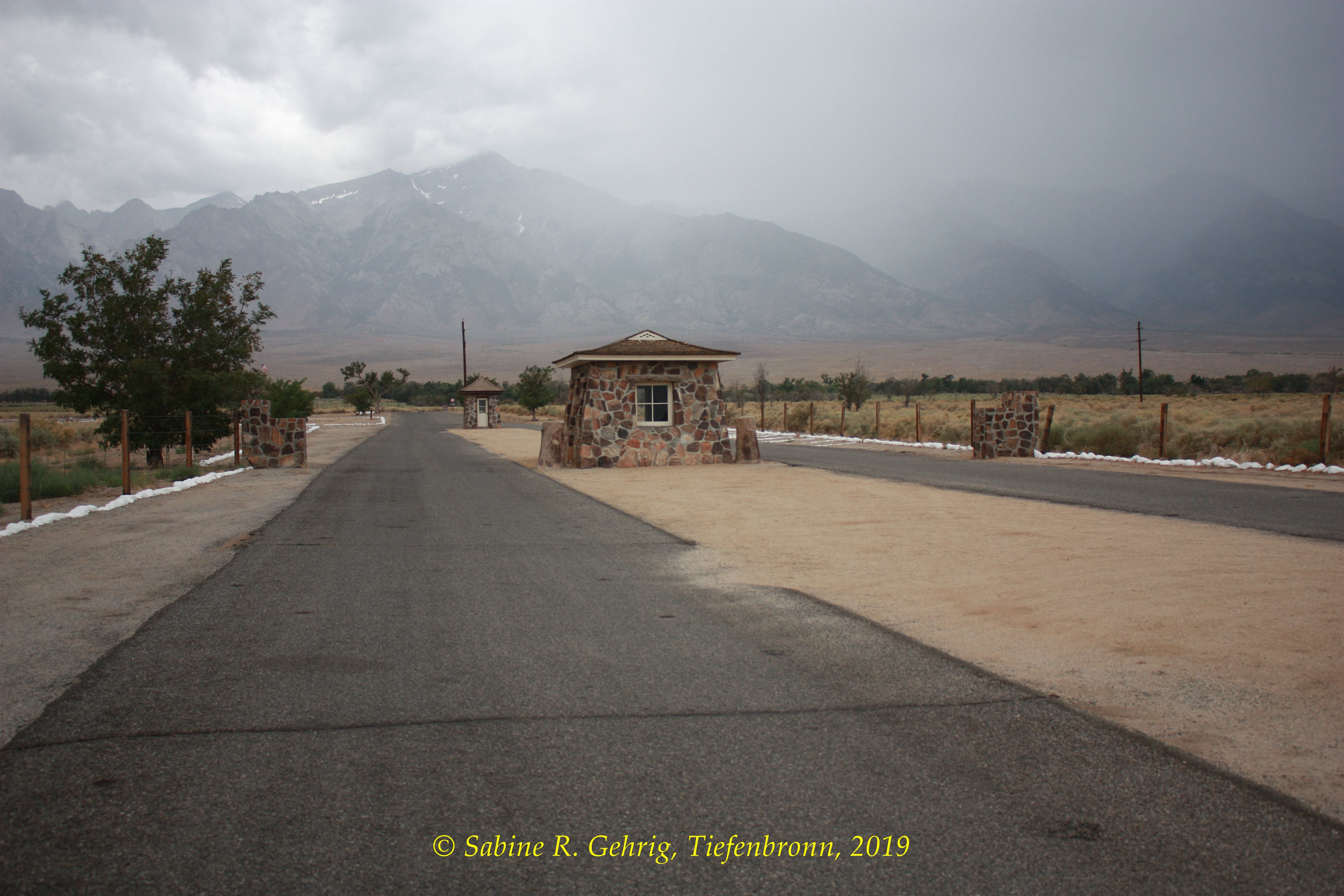
Manzanar National Historic Site, CA – der offizielle Eingang mit Kontrollposten durch den die Japaner ab Februar 1942 das Camp betraten / the official entrance with checkpoint through which the Japanese entered the camp from February 1942
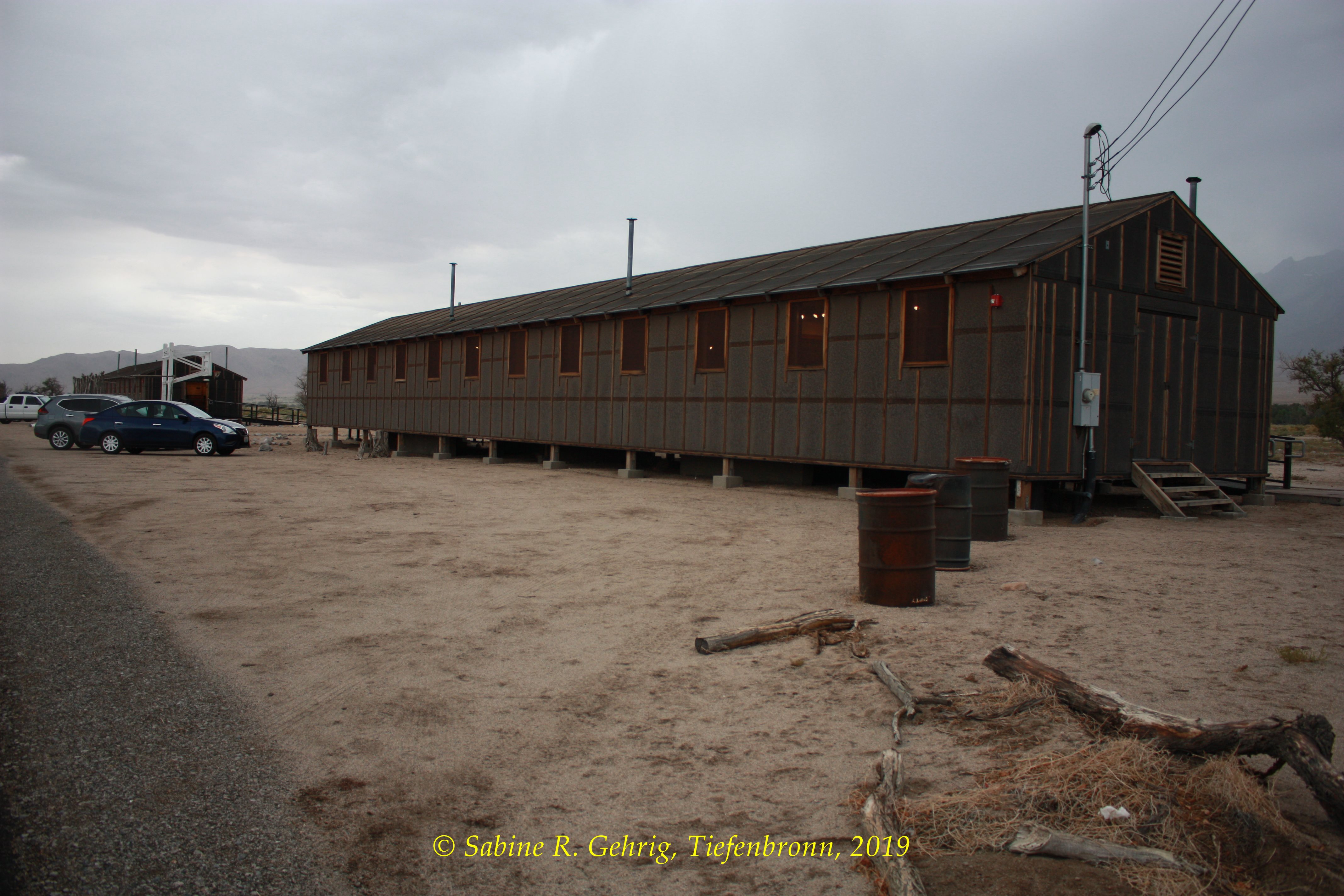
Manzanar National Historic Site, CA – Block 14 Baracke 8 vorne, Baracke 1 hinten. Auf ca. 2 km² befanden sich eingeteilt in 36 Blocks die Wohnbaracken und weitere Gebäude. / Block 14 Barracks 8 in the front, Barracks 1 in the back. On about 500 acres divided into 36 blocks, the residential barracks and other buildings were located.
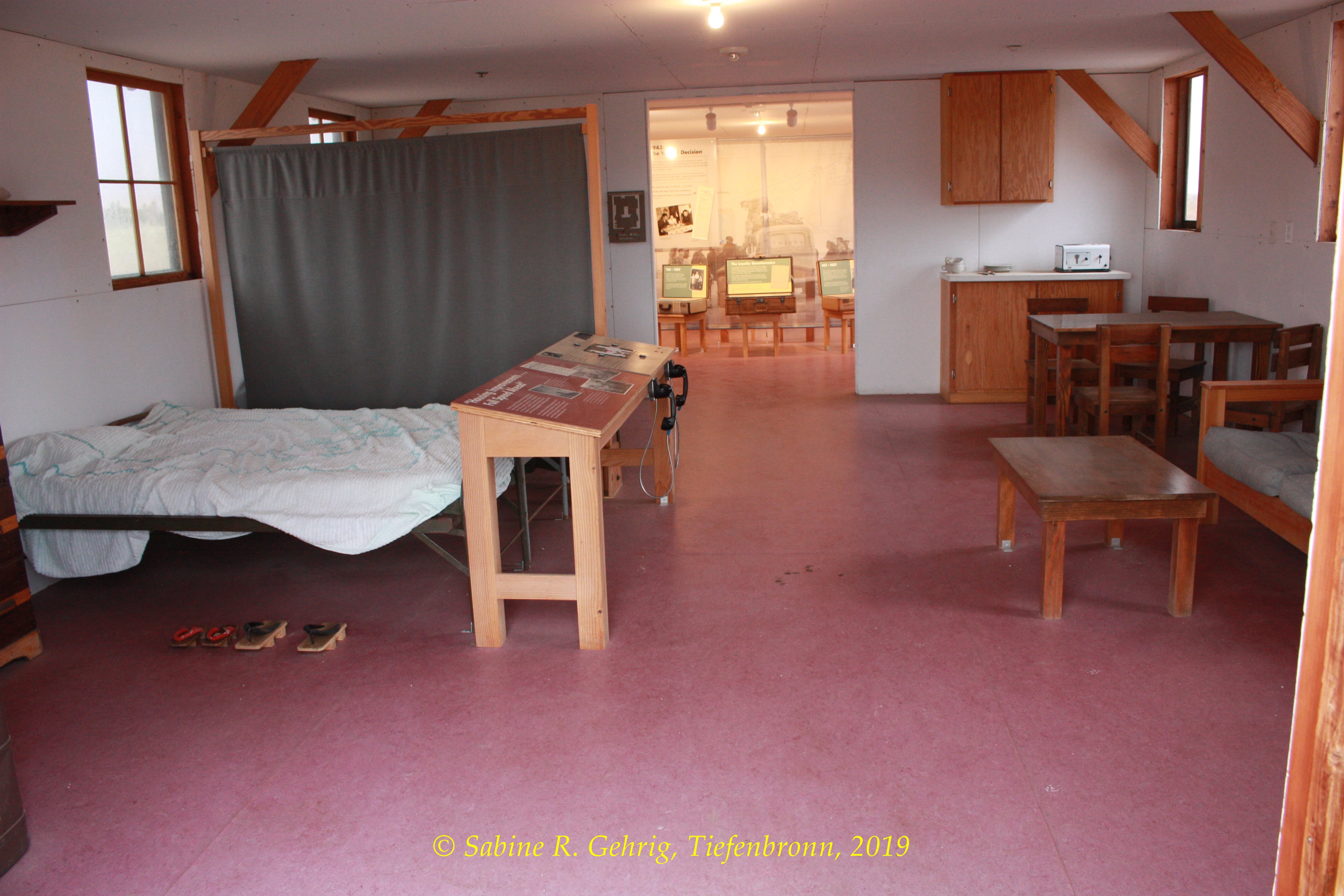
Manzanar National Historic Site, CA – Baracke 8 innen; Blick auf den Schlaf- und Wohnbereich; jeder Kombination von acht Personen wurde ein Raum von 6 x 7 m zugewiesen. Ein Ölofen, eine einzelne hängende Glühbirne, Kinderbetten, Decken und mit Stroh gefüllte Matratzen waren die einzigen Einrichtungsgegenstände. / Barrack 8 inside; view of the sleeping and living room; any combination of eight individuals was allotted a 20-by-25-foot room. An oil stove, a single hanging light bulb, cots, blankets, and mattresses filled with straw were the only furnishings provided.

Manzanar National Historic Site, CA – das “Badehaus” der Frauen von Block 14, in dem sich Waschbecken, Duschen und ein Toiletten befanden / Wommen’s Latrine of Block 14, which contained sinks, showers and toilets
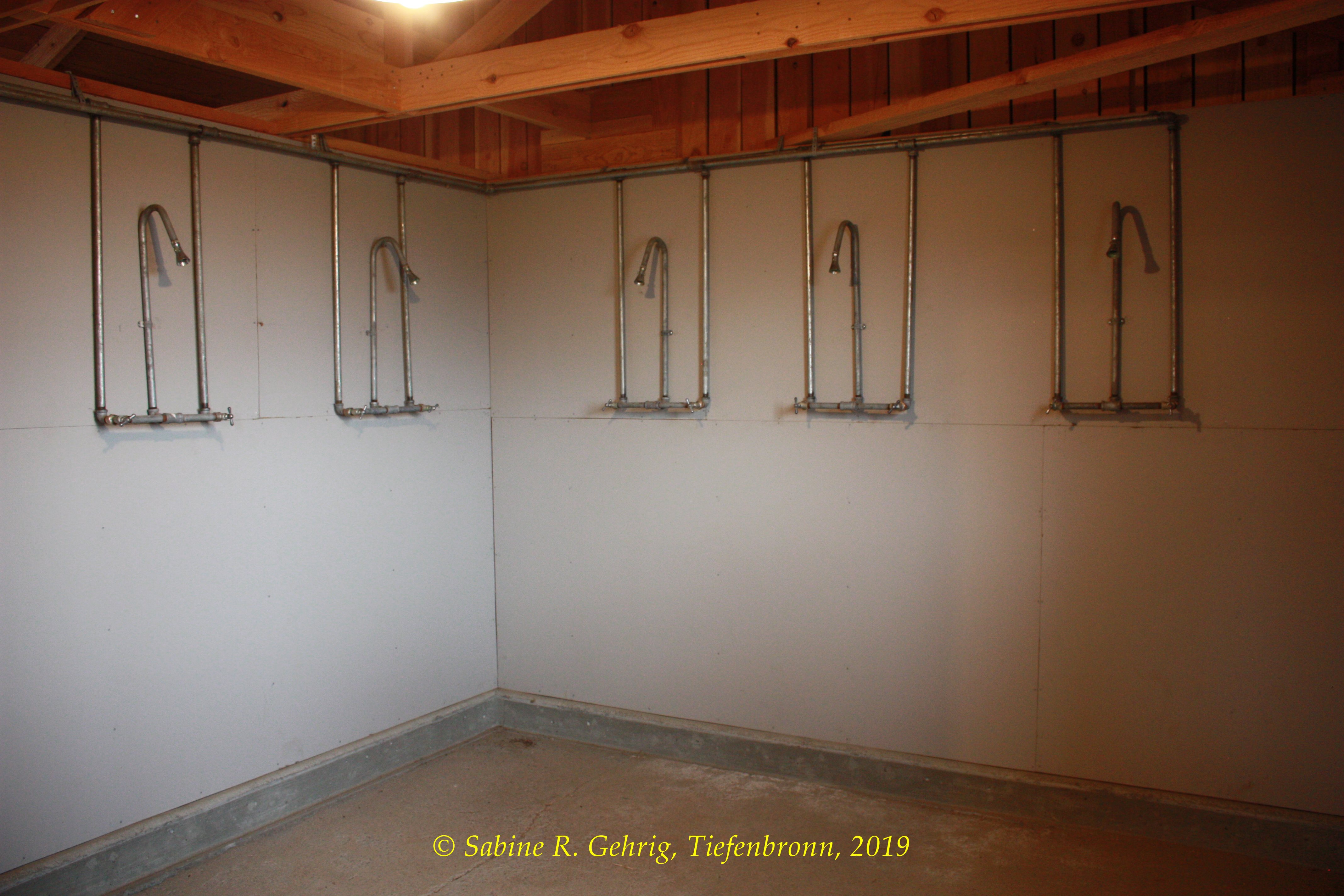
Manzanar National Historic Site, CA – die Duschen im “Badehaus” der Frauen von Block 14. In einem Block lebten 200 bis 400 Menschen./ the showers in Women’s Latrine of Block 14. In each block lived 200 to 400 people.
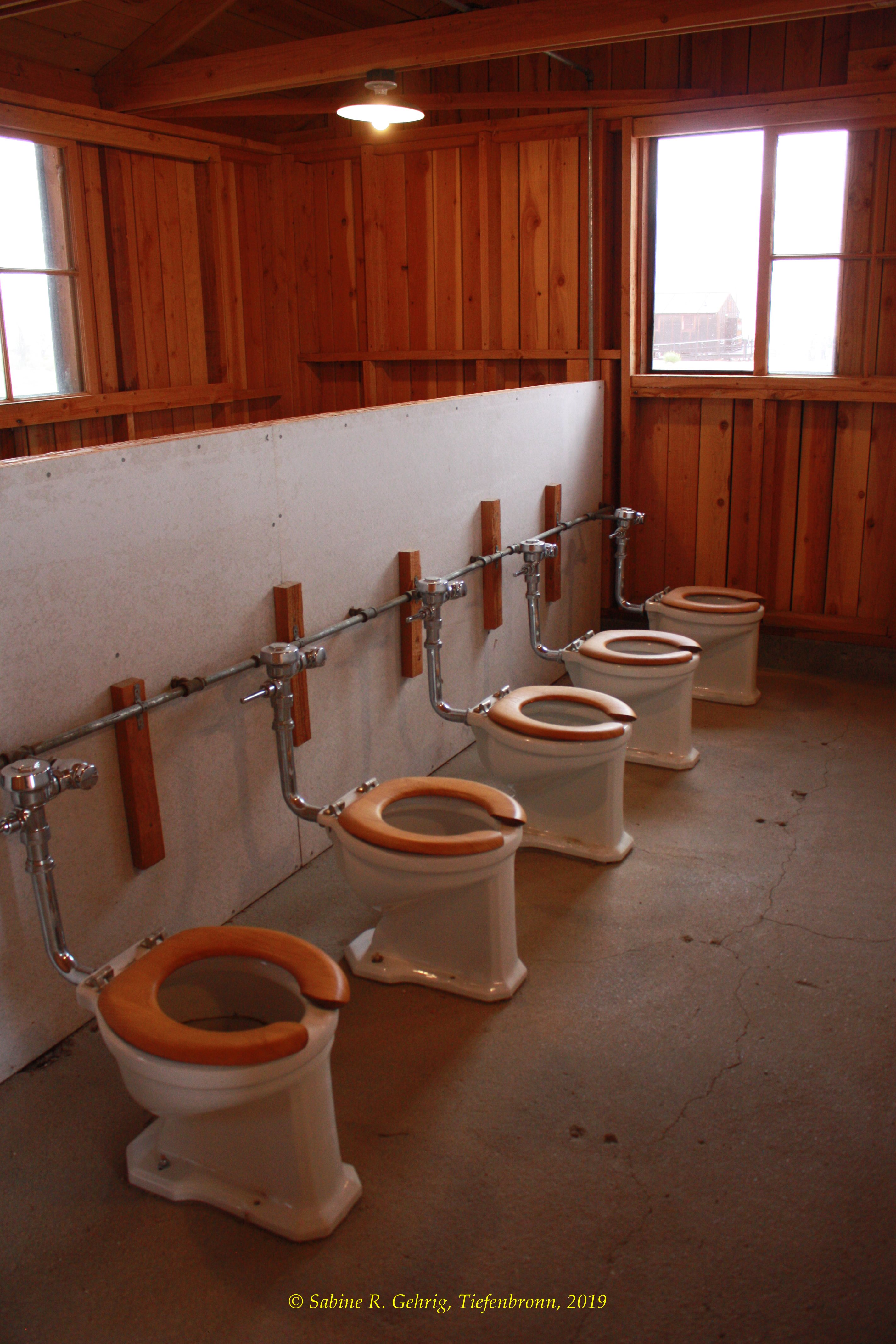
Manzanar National Historic Site, CA – die Toiletten im “Badehaus” der Frauen von Block 14 ohne jeglichen privaten Bereich für die Frauen; neben den Gemeinschaftstoiletten und –duschen gabe es noch ein Waschhaus./ the toilets in Women’s Latrine of Block 14 without any privacy for the women; beside the shared toilets and showers there was also a laundry room.
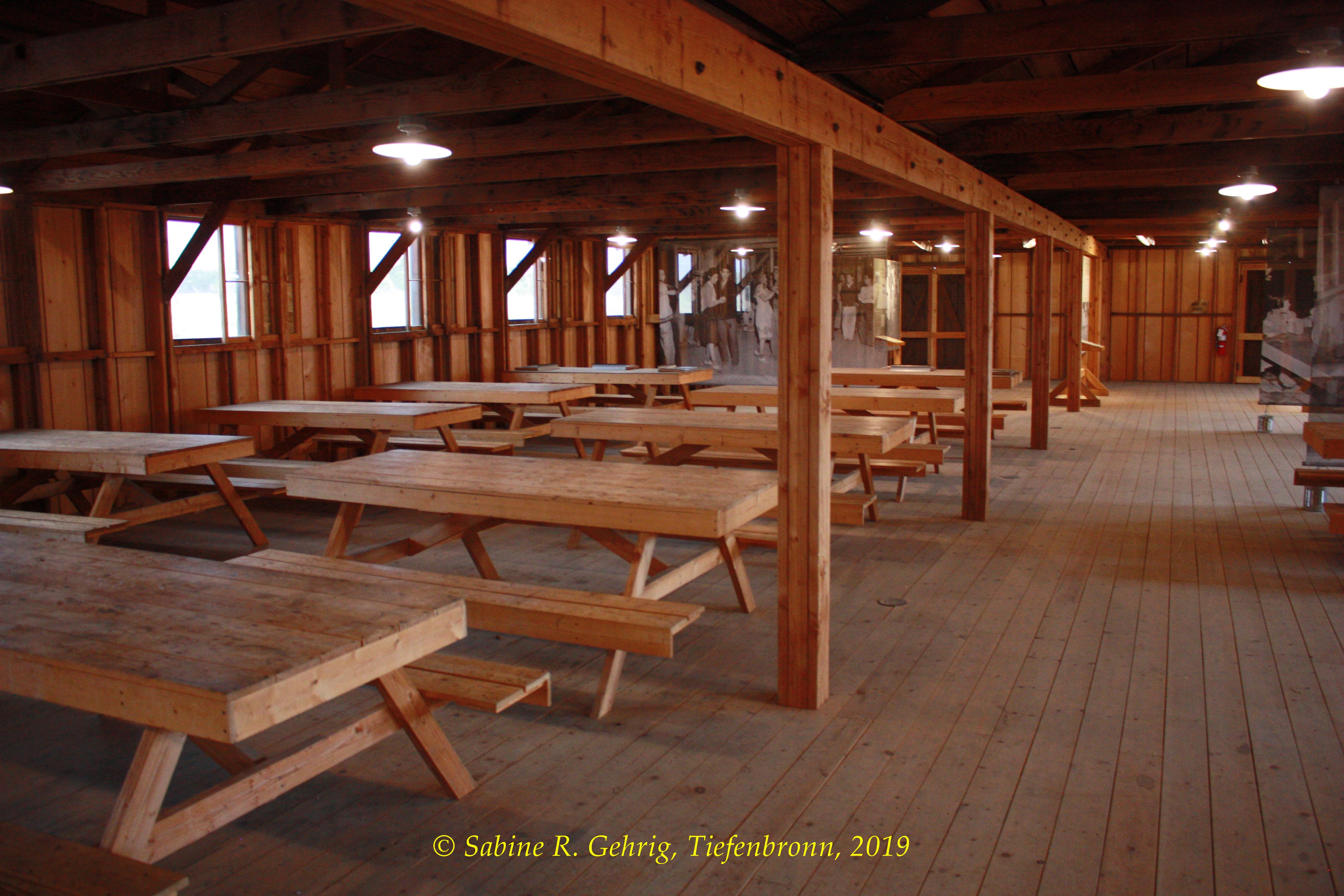
Manzanar National Historic Site, CA – Blick in die Kantine von Block 14, auf dem Speiseplan stand auch Sauerkraut und Würstchen / inside of the Mess Hall of Block 14, the menu also included sauerkraut and sausages

Manzanar National Historic Site, CA – Holzschild für Block 26, in dem wie in Block 14 Baracke hinter Baracke stand; hinten Berge der Sierra Nevada mit Gewitterwolken / Wooden sign for block 26, in which, as in block 14, barrack stood behind barrack; in the back mountains of the Sierra Nevada with thunderclouds
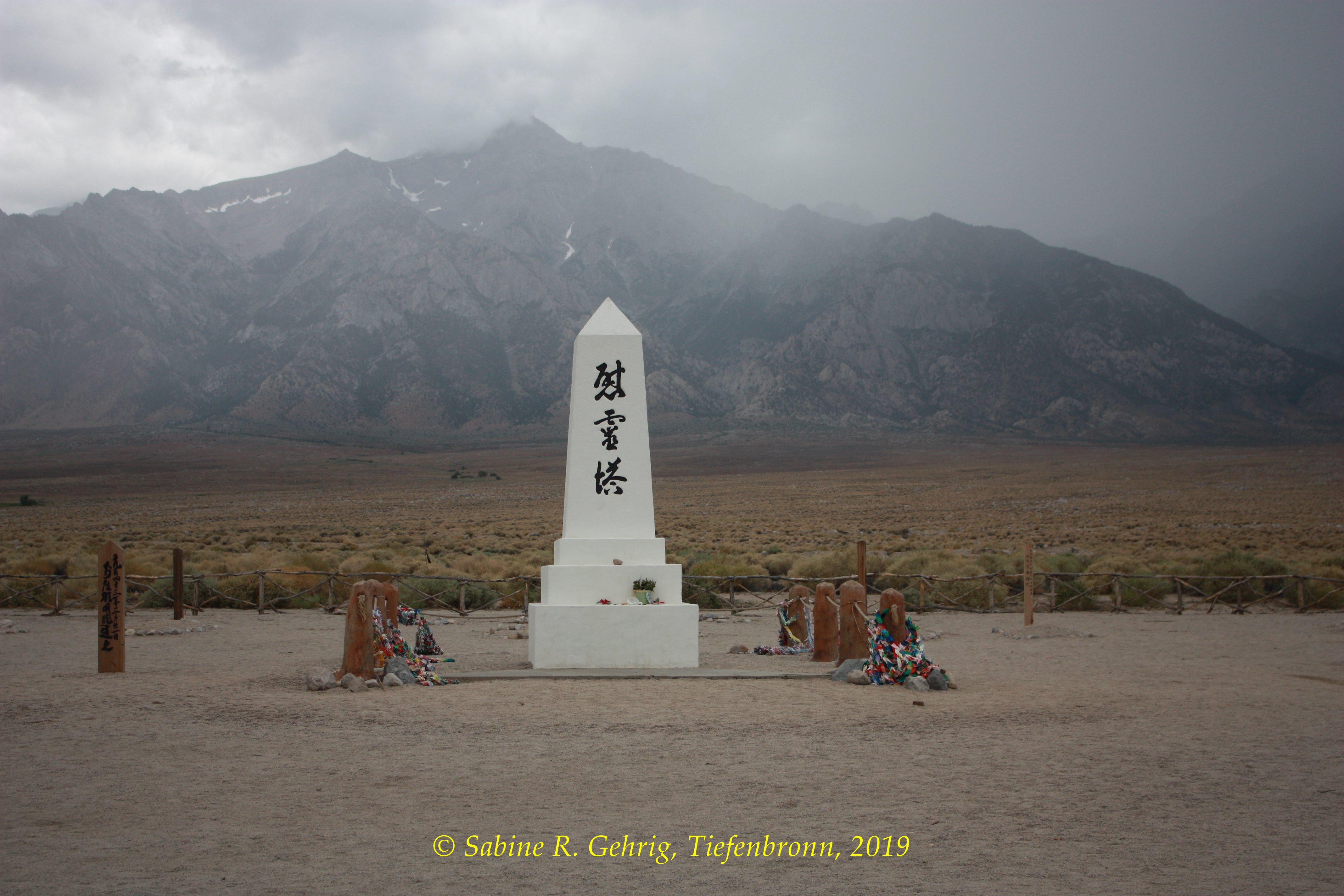
Manzanar National Historic Site, CA – Monument am Friedhof, der sich genau wie ein Wasserreservoir, eine Kläranlage und landwirtschaftliche Anbauflächen auf den 22 km² befanden, die um den Wohnbereich herum lagen. / Monument at the cemetery, which was located on the 5,500 acres surrounding the residential area, just like a water reservoir, a sewage treatment plant and agricultural land.
Very nicely done Sabine!
Manzanar is a great reminder of man’s inhumanity to man…I found my visit there so very interesting.
Jerry